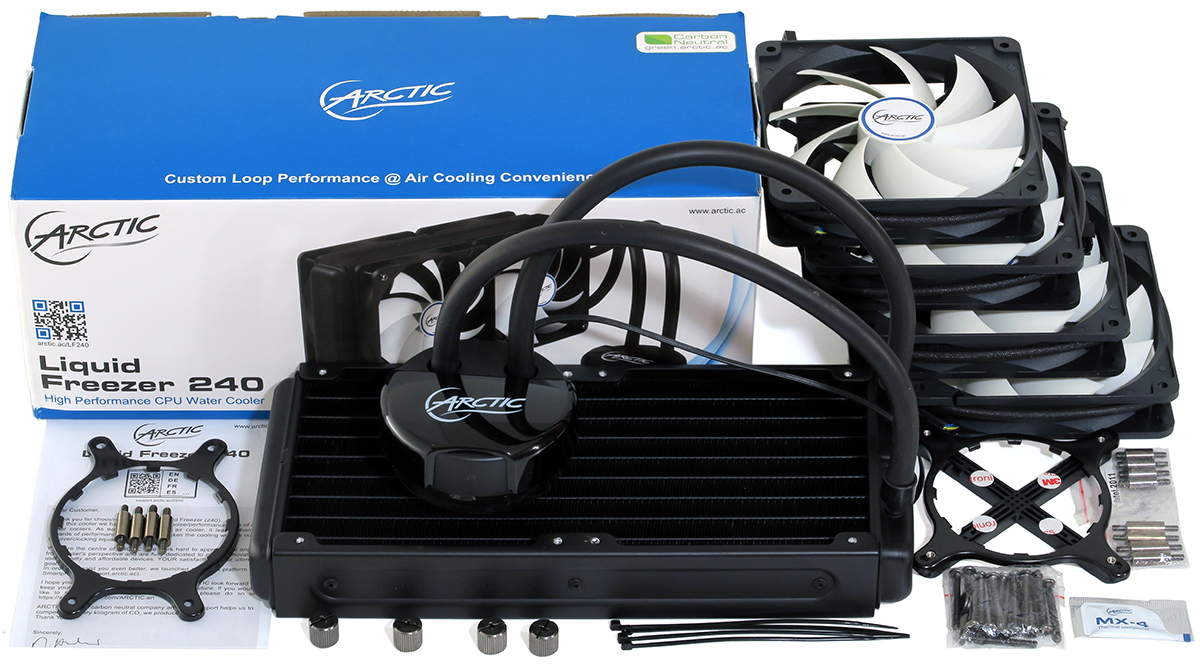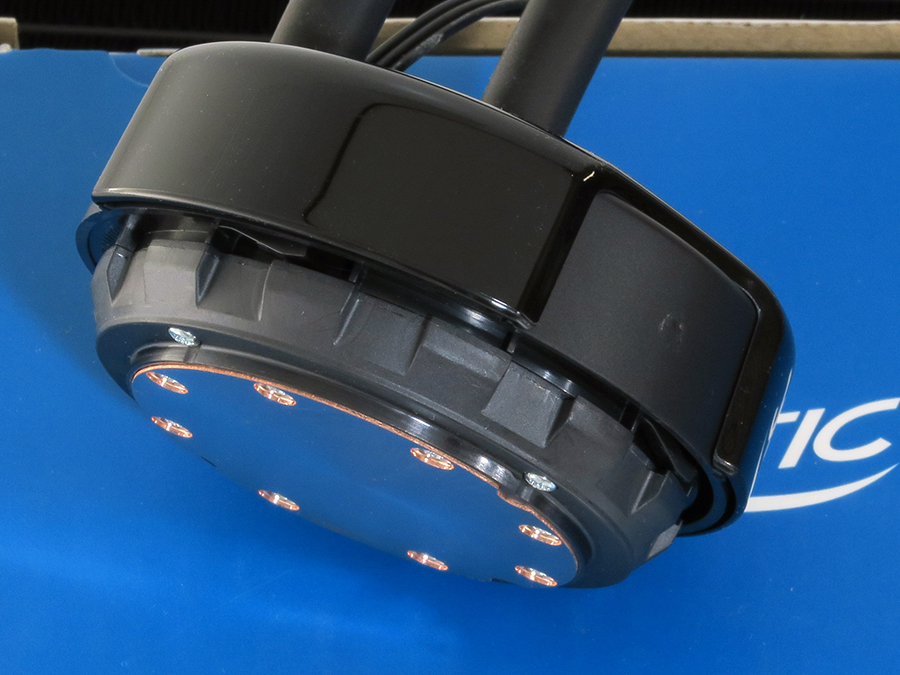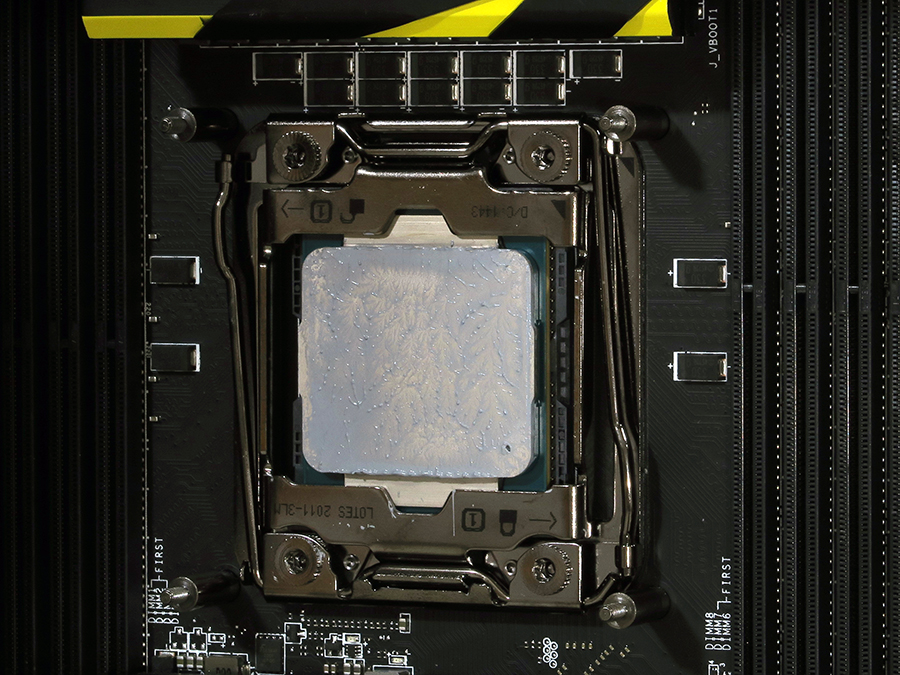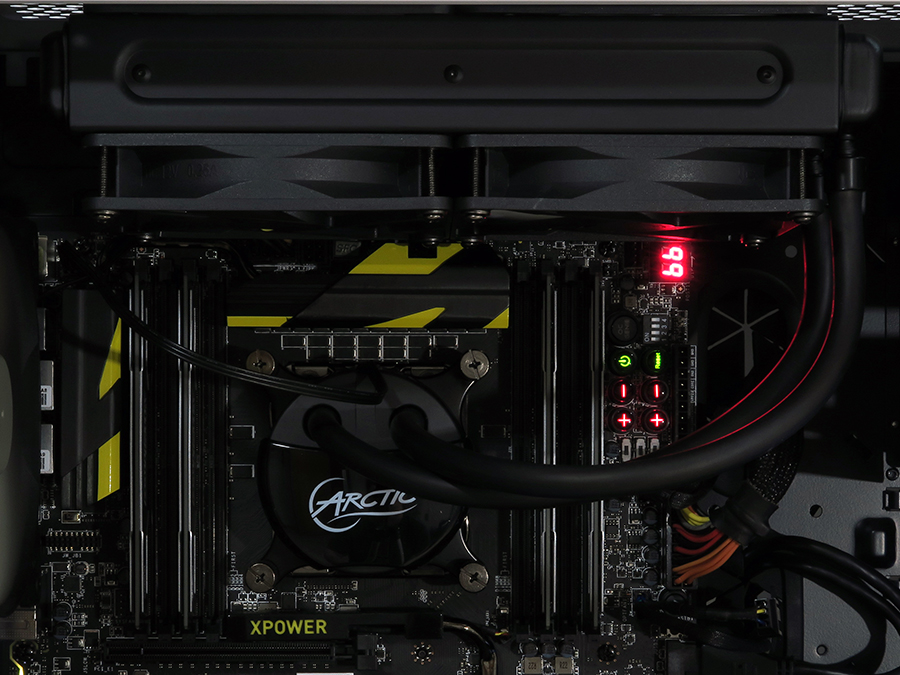Early Verdict
Builders who have room for a 3.6” thick, 120x240mm spaced liquid cooler will find ultimate performance and value in the Liquid Freezer 240 from Arctic.
Pros
- +
Better cooling
- +
Lower noise
- +
Moderate price
Cons
- -
Too thick to fit many cases
- -
Warranty available only through seller
Why you can trust Tom's Hardware
More Radiator, More Fans, Less Money?
Arctic has gained a reputation among CPU overclockers as a value brand, often producing slightly less cooling capacity than top “Big Air” models at a substantially lower price. GPU gurus, on the other hand, will recognize Arctic as the brand behind many of the dual-fan and triple-fan graphics cooler designs that are too thick to fit into two slot spaces. Bridging the gap between value priced CPU coolers and oversized GPU coolers is the monstrously thick Liquid Freezer 240 closed-loop liquid CPU cooler.
The Liquid Freezer 240 starts off with a 1.5” thick radiator, which is somewhat of a standard for enthusiast-grade liquid cooling, and sandwiches it between four fans, which is the standard for making under-performing coolers perform. Based on those specifics alone we’d expect the Liquid Freezer 240 to be one of the top performers in the closed-loop class, though at the cost of some fitment issues. Many mainstream gaming cases are now designed with around 2.5” of radiator clearance, and the second layer of fans pushes the Liquid Freezer 240 a little past the 3.5” mark.
The Liquid Freezer 240 uses a mounting ring similar to the classic Asetek design, but adds locking barbs rather than hooked ends on the metal ring’s tabs. The ring is secured to four standoffs, and Arctic includes different standoffs for AMD, Intel LGA 115x (1156/1155/1150/1151), and Intel LGA 2011x (v1 and v3) motherboards.
The base itself appears to be unpolished, lathe turned copper.
The Intel mounting ring is drilled for both LGA 115x and 2011x installations. Builders who are willing to reuse their old LGA 1366 threaded socket support plates may be able to combine it with Arctic’s 115x standoffs by using the mounting ring’s 2011x holes, but package thickness (the thickness of the CPU, LGA, and heat spreader) could still be an issue for that type of unsanctioned installation. Anyone willing to perform an experimental installation should feel free to post their findings in this article’s response thread.
LGA 2011x standoffs are threaded differently on one end, to fit the motherboard’s integrated support mechanism. LGA 115x installations use an Arctic-supplied support plate, which must be mounted behind the board to receive the M3 x 0.50mm standoff ends. AMD installations are similar to those of LGA 2011x, except that they require builders to first unscrew the standard hook brackets from the top of their boards. AMD motherboards with pinned-on brackets aren’t compatible, unless the builder replaces the motherboard’s rear support plate with a nutted or threaded version.
Arctic recommends an intake orientation for its fans, even when the unit is mounted on the top panel. The firm also lists exhaust orientation as a secondary option. Putting aside any ideas about convection, we should note that our case only has dust filters on its front and bottom panels. A “standardized” test configuration doesn’t allow us to move the front fans, and that means top panel intake fans will create positive pressure that resists additional airflow. The easy solution for us is to test the Liquid Freezer 240 in both intake and exhaust fan configurations, though actual builders may instead choose to front-mount their Liquid Freezer 240 in intake orientation.
Get Tom's Hardware's best news and in-depth reviews, straight to your inbox.
MORE: Best CPU Cooling
MORE: How To Choose A CPU CoolerMORE: All Cooling Content
MORE: In Pictures: 20 Clever Liquid-Cooled PC Setups
-
IceMyth "Warranty available only through seller" is enough reason not to buy this cooler if you want to stick with the exact same amount 73.2$!Reply -
Crashman Reply
AC has a web store if you don't mind paying the extra $10 to order direct. And Newegg will probably be around in two years as well, but their direct sale is also $10 extra. So I guess that means "pay $10 extra for warranty assurance".18572577 said:"Warranty available only through seller" is enough reason not to buy this cooler if you want to stick with the exact same amount 73.2$!
If you're really concerned about lower-priced sellers, the cooler is probably nice enough to pay for that.
-
n0ns3ns3 the thickness is easily solved by using only 2 fans.Reply
other two are bonus and con be used anywhere else. -
g-unit1111 Reply18572577 said:"Warranty available only through seller" is enough reason not to buy this cooler if you want to stick with the exact same amount 73.2$!
Agreed, major deal breaker there. -
RomeoReject Even only using two fans still leaves the unit about a half inch thicker than its rivals, which can be a pain. I have the x61 Kraken, and its juuuust thin enough not to interfere with my things. That half an inch would totally screw me.Reply -
n0ns3ns3 ^ i'd probably use this one if i needed thin AiOReply
http://www.alphacool.com/shop/sets-und-systems/20225/alphacool-eisbaer-240-cpu-black
-
Eggz Shouldn't it be illegal to call these CPU cooler things like "freezer," "chili," "frozen," "cold," etc. unless they actually produce cold like a refrigerator does? All of these coolers are actually warm at about 100F when operating, even if they do a very good job of cooling the CPU like this unit does.Reply -
LookItsRain Reply18574009 said:Shouldn't it be illegal to call these CPU cooler things like "freezer," "chili," "frozen," "cold," etc. unless they actually produce cold like a refrigerator does? All of these coolers are actually warm at about 100F when operating, even if they do a very good job of cooling the CPU like this unit does.
Its part of their naming scheme, if your stupid enough to take the name 100% literally, well, should it be illegal to be that stupid in the first place?. -
10tacle As a long time high end air cooler builder, I found the results of the exhaust vs. intake temp setup interesting even though they were only a degree apart. It reminded me of the minor but noticeable temp performance difference when I tested my 4690K build with my Antec Nine Hundred case side door off vs. side door on (runs cooler with the side door on and sealed).Reply
I believe it has something to do with that dude named Bernoulli. ;)





